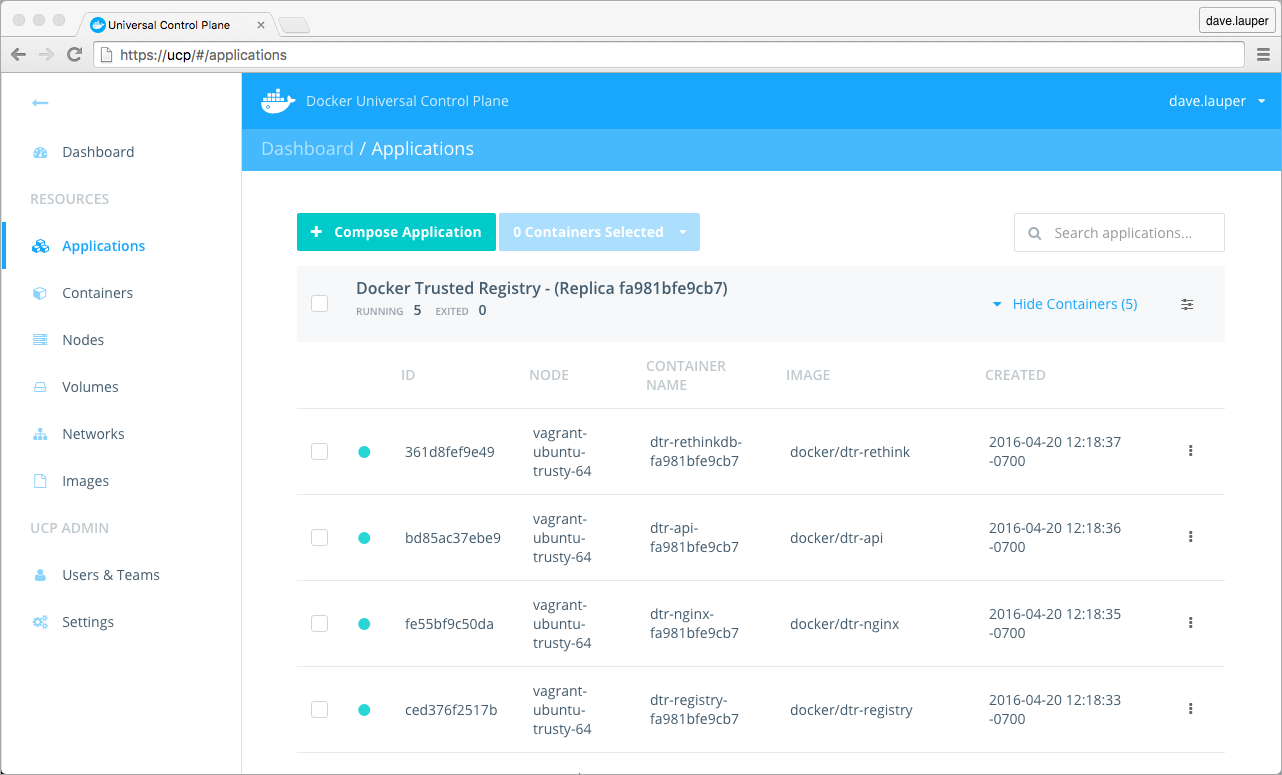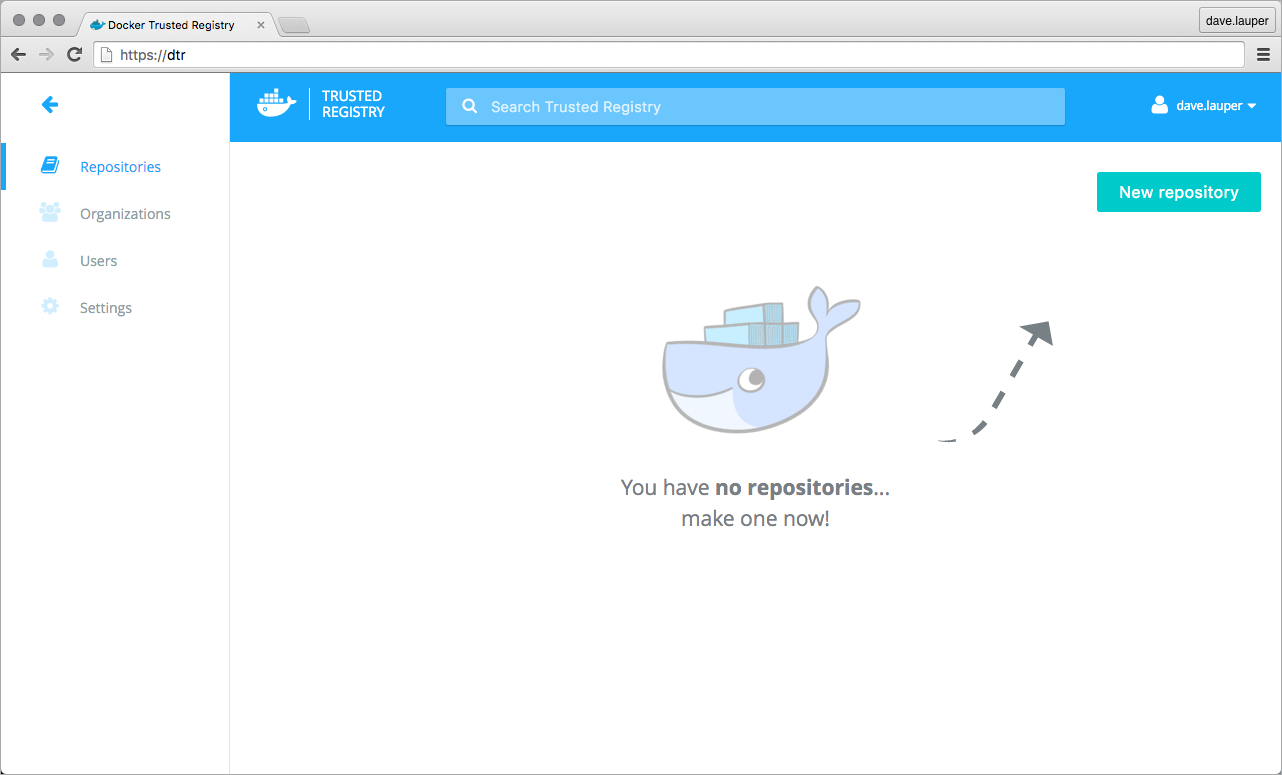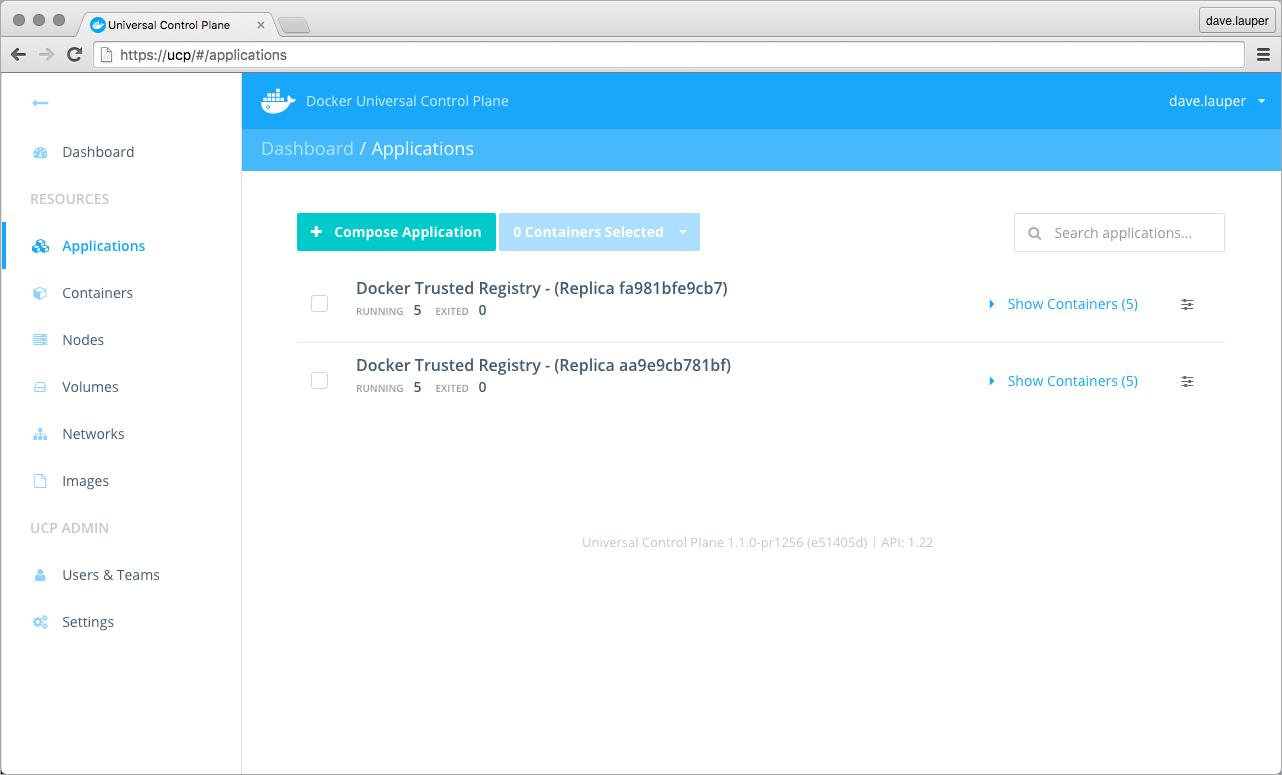Install Docker Trusted Registry
Estimated reading time: 4 minutesDocker Trusted Registry (DTR) is a containerized application that runs on a Docker Universal Control Plane (UCP) cluster. It can be installed on-premises or on a cloud infrastructure.
Use these instructions to install DTR.
Step 1. Validate the system requirements
The first step in installing DTR, is ensuring your infrastructure has all the requirements DTR needs to run.
Step 2. Install UCP
Since DTR requires a Docker Universal Control Plane (UCP) cluster to run, you need to install UCP first. Learn how to install UCP. Make sure that the node you install DTR on is already joined to the UCP cluster.
Step 3. Install DTR
To install DTR you use the docker/dtr image. This image has commands to
install, configure, and backup DTR.
To install DTR:
-
Download a UCP client bundle.
Having a UCP client bundle allows you to run Docker commands on a UCP cluster. Download a UCP client bundle and set up your CLI client to use it.
-
Run the following command to install DTR.
# Get the certificates used by UCP $ curl -k https://$UCP_HOST/ca > ucp-ca.pem # Install DTR $ docker run -it --rm \ docker/dtr install \ --ucp-url $UCP_URL \ --ucp-node $NODE_HOSTNAME \ --dtr-external-url $DTR_PUBLIC_IP \ --ucp-username $USER --ucp-password $PASSWORD \ --ucp-ca "$(cat ucp-ca.pem)"Where:
- ucp-url, is the URL of the UCP controller,
- ucp-node, is the hostname of the UCP node where DTR will be installed,
- dtr-external-url, is the public IP or domain name where DTR can be reached,
- ucp-username, and ucp-password are the credentials of a UCP administrator,
- ucp-ca, is the certificate authority used by UCP.
-
Check that DTR is running.
In your browser, navigate to the Docker Universal Control Plane web UI, and navigate to the Applications screen. DTR should be listed as an application.

You can also access the DTR web UI, to make sure it is working. In your browser, navigate to the address where you installed DTR.

Step 4. Configure DTR
After installing DTR, you should configure:
- The Domain Name used to access DTR,
- The certificates used for TLS communication,
- The storage backend to store the Docker images.
To perform these configurations, navigate to the Settings page of DTR.

Step 5. Test pushing and pulling
Now that you have a working installation of DTR, you should test that you can push and pull images to it. Learn how to push and pull images.
Step 6. Join replicas to the cluster
This step is optional.
To set up DTR for high availability, you can add more replicas to your DTR cluster. Adding more replicas allows you to load-balance requests across all replicas, and keep DTR working if a replica fails. Each replica must be located on a node already joined to the UCP cluster.
To add replicas to a DTR cluster, use the docker/dtr join command. To add
replicas:
-
Load you UCP user bundle.
-
Run the join command.
When you join a replica to a DTR cluster, you need to specify the ID of a replica that is already part of the cluster. You can find an existing replica ID by going to the Applications page on UCP.
Then run:
# Get the certificates used by UCP $ curl -k https://$UCP_HOST/ca > ucp-ca.pem $ docker run -it --rm \ docker/dtr join \ --ucp-url $UCP_URL \ --ucp-node $UCP_NODE \ --existing-replica-id $REPLICA_TO_JOIN \ --ucp-username $USER --ucp-password $PASSWORD \ --ucp-ca "$(cat ucp-ca.pem)"Where:
- ucp-url, is the URL of the UCP controller,
- ucp-node, is the node on the ucp cluster where the DTR replica will be installed,
- existing-replica-id, is the ID of the DTR replica you want to replicate,
- ucp-username, and ucp-password are the credentials of a UCP administrator,
- ucp-ca, is the certificate used by UCP.
-
Check that all replicas are running.
In your browser, navigate to the Docker Universal Control Plane web UI, and navigate to the Applications screen. All replicas should be displayed.

-
Follow steps 1 to 3, to add more replicas to the DTR cluster.
When configuring your DTR cluster for high-availability, you should install 3, 5, or 7 replicas. Learn more about high availability